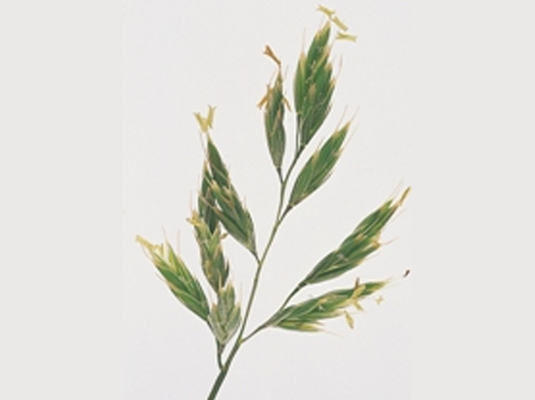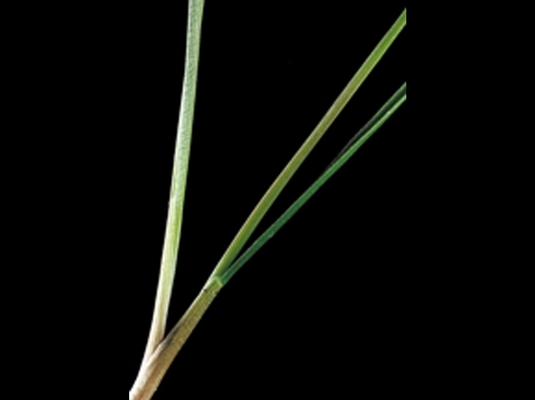Perennial, densely tufted tussock grass. Very diverse forms with growth heights ranging from 15–60 cm.
The following species are considered important: Fine leaved fescue (Festuca ovina tenuifolia); hard fescue (Festuca ovina duriuscula); “common” fescue (Festuca ovina vulgaris) and “Valais” fescue (Festuca ovina vallesiaca). Sheep's fescue grows in nutrient-poor, dry, sandy soils such as heathland and wasteland, and on dry banks and rough grassland. Its dense root system makes it very resistant. Except on rough pasture, sheep's fescue (feed value 3) has no agricultural value, but in dry situations it leaves behind plenty of organic matter for follow-on crops. Low maintenance requirements and slow growth make it ideal for groundcover. Sheep's fescue is mainly used for greening and stabilising light soils to guard against erosion.
| Leaf | Leaf folded in the bud. Leaf blade needle-like, very slender, impossible to unfurl. Leaf colour has many transitions from grey-green to sea-green to blue-green. The ligule is short and lobed at the sides. |
| Culm | Culms upright to inclined, usually with 2 nodes. Culm heights range from 15–40–60 cm depending on form. |
| Inflorescence | Panicle approx. 15 cm long with 1 side branch at the lower nodes. Upright initially, then spread horizontally. Spikelets have long pedicels, usually 5–9 florets which flower in April/May. Glumes rounded at the top, lemmas ovate, awn-tipped, often purple. |
| Fruit | Grain short and plump (mussel-shaped), lemma sharply pointed at the top, mostly awnless, but may also be awn-tipped. Pedicel 0.5-1 mm long (shorter than that of red fescue), widening towards the top and covered in short hairs. TSW 0.5–1.0 g. Husk (lemma and palea) tightly enclosing caryopsis, which is visible. |

